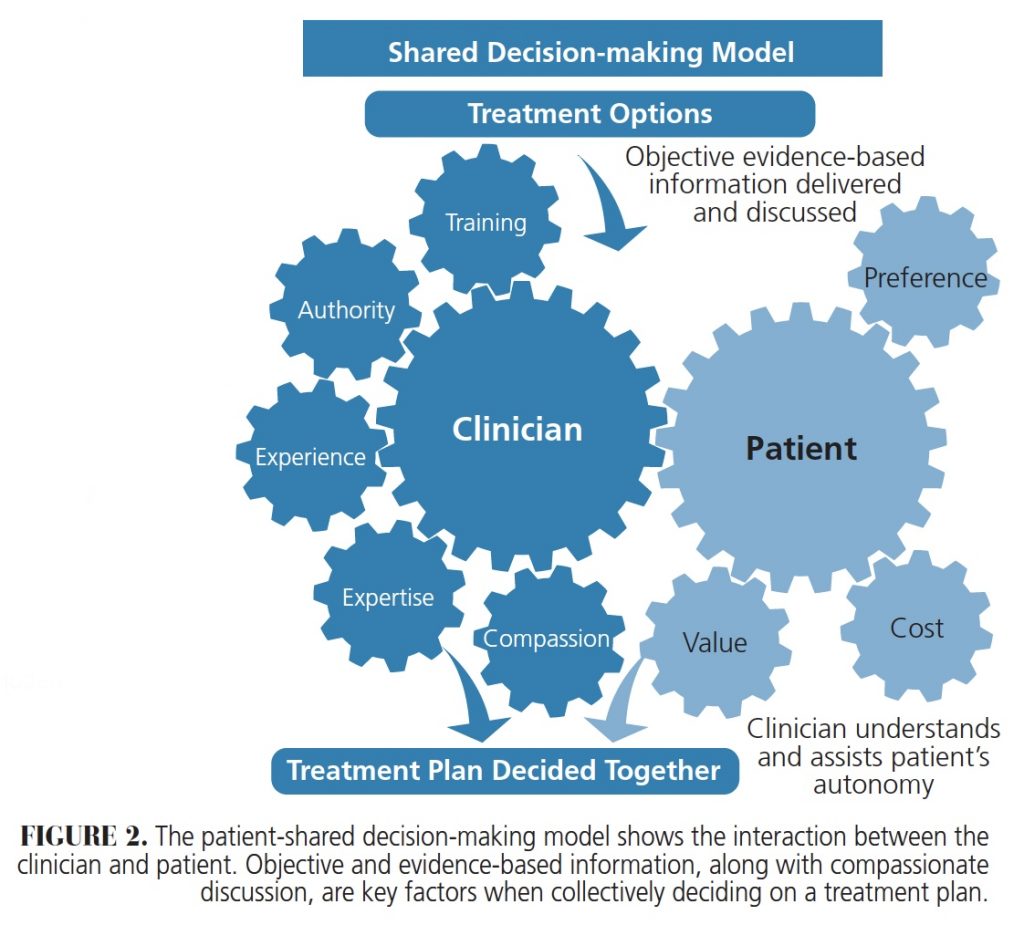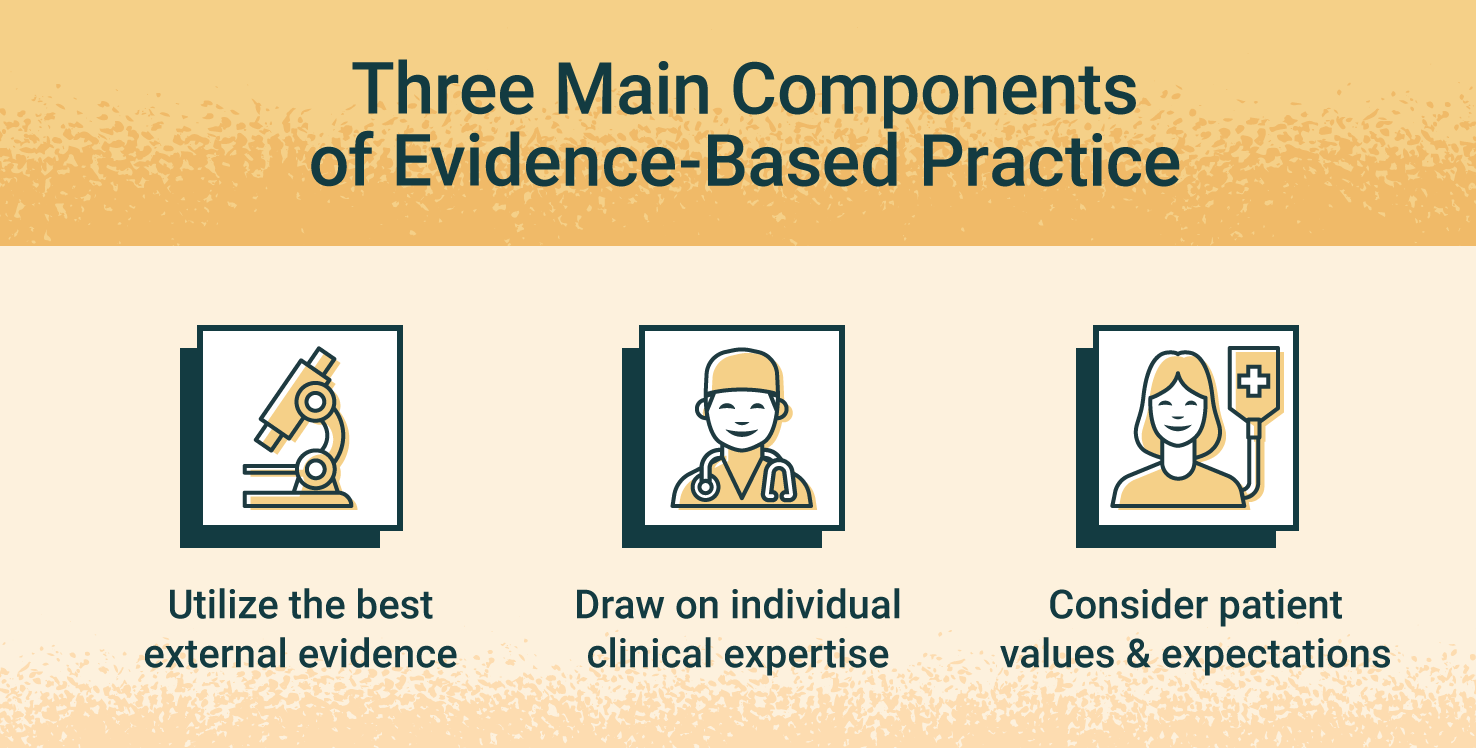

EBP is underpinned by models of rationality, where our decisions, actions, and beliefs are a rational response to the trustworthiness of evidence ( 12).

The core tenant of evidence-based decision-making in rehabilitation is to make a decision that achieves the best outcome for the client. Such challenges highlight the need for well-reasoned decision-making within EBP. In addition, the production of rehabilitation evidence is occurring at an even faster rate than pharmacology, meaning professionals experience information overload ( 11). Barriers to evidence uptake in rehabilitation are real and are known to include time, skills, confidence, institutional support, workflow discordant to the new evidence, and patient preferences that differ ( 8– 10). As well as a widespread lag in adoption of new treatments, only 55% of clients receive recommended treatments ( 5, 6) and another 43% receive care that is inappropriate or potentially harmful ( 7). This evidence lag is also likely a significant underestimation, with studies only measuring part of the evidence-to-practice process ( 4). For example, a systematic review of preventable risk factors for Sudden Infant Death Syndrome (SIDS) published in 2005 found that earlier implementation of the supine sleeping “Back to Sleep” campaign, may have prevented at least 50,000 infant deaths in Europe, the USA, and Australasia since the 1970's ( 3). These translational “Valleys of Death,” i.e., the transition from basic research to clinical knowledge and from clinical knowledge to practice or implementation and then policy ( 2), are longer than a whole childhood and potentially harmful for pediatric rehabilitation clients. Despite this, clinical practice may lag as much as 10–20 years behind research ( 1). The READ Model applies the four central principles of evidence-based practice and can be applied across multiple rehabilitation settings.Įvidence-based practice (EBP) has become the cornerstone of care to maximize client outcomes through the application of best-available interventions. Two case studies are used to demonstrate application of the READ Model: cerebral palsy and autism spectrum disorder. Healthcare professionals can apply the READ Model to choose interventions that are evidence-based, with an appropriate mode, dose, and with regular review, in order to achieve client's goals. The READ Model acknowledges the important multi-layered contributions of client's preferences and values, family supports available, and external environmental factors such as funding, availability of services and access.

The READ Model outlines a step-by-step layered process for healthcare professionals to collaboratively set goals, and to select appropriate interventions. This paper proposes the Rehabilitation Evidence bAsed Decision-Making (READ) Model, a decision-making algorithm for evidence-based decision-making in rehabilitation settings. However, an unacceptably high number of ineffective or outdated interventions are still implemented, leading to sub-optimal outcomes for clients. 2Specialty of Child and Adolescent Health, Faculty of Medicine and Health, Sydney Medical School, The Cerebral Palsy Alliance Research Institute, University of Sydney, Sydney, NSW, AustraliaĮvidence-based practice is the foundation of rehabilitation for maximizing client outcomes.1Faculty of Medicine and Health, The University of Sydney, Sydney, NSW, Australia.Paton 2, Megan Finch-Edmondson 2 and Catherine Morgan 2 Iona Novak 1,2 *, Anna te Velde 2, Ashleigh Hines 2, Emma Stanton 2, Maria Mc Namara 2, Madison C.


 0 kommentar(er)
0 kommentar(er)
